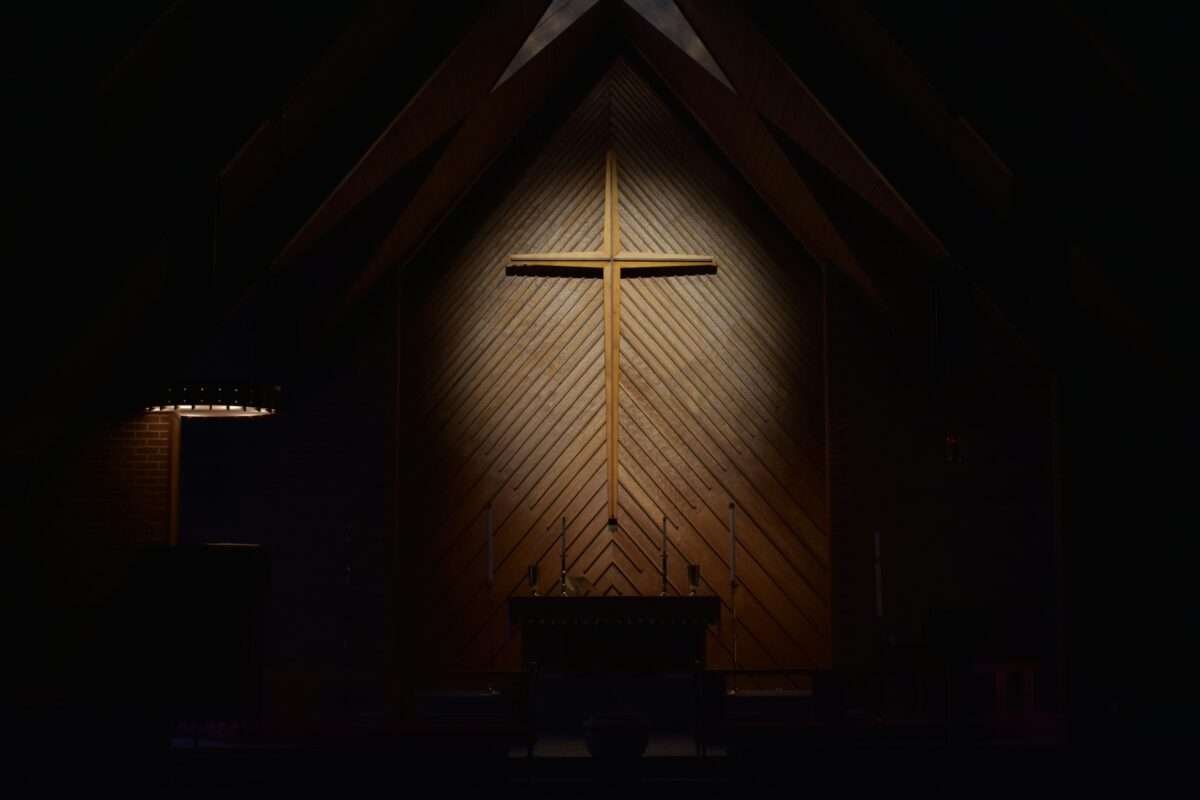Church architecture is far from just a matter of stone and wood – it’s a carefully orchestrated dialogue between God, a community, and a spiritual experience. From the soaring arches of gothic cathedrals to the minimalist modernism of community churches, the structures we create to house worship play a profound role in how we experience a worship service. For pastors, church leaders, and designers, understanding the critical relationship between worship and church design can help create spaces that not only withstand the test of time but continue to inspire and uplift generations.

Theology and Architecture: An Interconnected Relationship
The story of church architecture is woven into the broader tapestry of the history of Christianity. Early Christian meeting places, quiet, hidden, and often secretive, changed into grand basilicas, reflecting a sense of grand sense of welcome. The Romanesque period then saw a turn inward, with heavy stone walls and small windows conveying a fortress-like quality, mirroring the protective role of the Church in the Dark Ages.
The advent of Gothic architecture introduced a radical new idea – the idea that light itself could become a theological statement. The massive stained-glass windows captured the sun’s rays, creating a kaleidoscope of color in houses of worship, drawing parallels to Christ as the “light of the world.” The high, vaulted ceilings pointed upwards, symbolizing the aspiration of the soul toward heaven.
With the emergence of modernism came a recalibration of the church’s role in a widely changing society. Gleaming steel and glass structures began to replace complex ornamentation for a focus on simplicity, reflecting a desire for a direct, unmediated encounter with the Lord. These architectural choices were often backed by theological shifts, influenced by the values of the church community.
Sacred Spaces: Elements of Church Design
The design of a church is so much greater than a shallow aesthetic choice; it’s a series of intentional decisions that shape the worship experience. Here are just four elements to consider that stand out: seating arrangement, lighting, acoustics, and religious iconography. Each plays a distinct role in facilitating spiritual reflection and community interaction.
Seating Arrangement can directly influence a congregation’s sense of unity and participation. Traditional pews facing the altar encourage a collective focus on the service and spiritual practices. In contrast, circular or semi-circular arrangements foster a sense of community and inclusiveness, making the worship experience more intimate.
Lighting in church architecture works as both a practical and symbolic feature, as prefaced earlier in this article. Natural light dancing through stained glass windows narrates biblical stories and principles through vibrant colors and images, creating a more traditional worship atmosphere. Artificial lighting is used subtly to highlight architectural features or iconography, enhancing the ambiance.
Acoustics play a crucial role in the auditory experience of worship. Churches are designed to carry sound effectively, allowing music and spoken word to resonate naturally within the space. The quality of acoustics can uplift hymns and sermons, making them more emotionally impactful and all-inclusive for the congregation.
Religious Iconography serves as a visual statement of faith, embedding the church’s theological beliefs and symbolism into its very structure. Symbols of the cross or paintings of Biblical events can held to remind us of why we attend church in the first place. The visuals of faith symbols can profoundly affect the emotional and spiritual experience of worshippers, connecting them to a larger tradition and narrative.
Together, these elements contribute to something greater than defining the physical space of a church. They work in tandem to create an environment that supports worship, encourages reflection, and fosters a deep sense of community among the congregation.
Modern Church Architecture: A Shift Towards Community-centric Design
In the modern landscape of church architecture, a profound transformation is underway, marking a transition from traditional design paradigms to meet the multifaceted needs of contemporary congregations. This shift, while rooted in practicality, also carries a deeper message of inclusivity and community engagement, reflecting the values of a welcoming church community.
Contemporary church designs are increasingly prioritizing multipurpose spaces, recognizing the dynamic nature of modern congregational needs. These spaces are not only designed for Sunday services but also cater to a wide range of community events, from educational programs and social gatherings to church camps. This approach to design emphasizes movement, flexibility, and practicality, ensuring that church buildings can adapt to various activities and functions. By doing so, architects are reimagining churches as vibrant community hubs where everyone could be entering into the church.
Historically, the architecture of worship spaces has mirrored the societal norms and values of their times, sometimes even perpetuating notions of exclusion. However, today’s church architecture champions the cause of inclusivity, employing design elements that make these spaces accessible and welcoming to everyone, regardless of physical ability or background.
Ramps and elevators are becoming standard features, replacing stairs and offering easy access to all levels of the church building. Open layouts are carefully planned to accommodate a variety of physical challenges, eliminating spatial barriers that once restricted mobility within these spaces. Such considerations extend beyond mere functionality; they are a testament to the belief that spiritual communities should be open and accessible to all.
Materials, colors, and lighting are chosen not only for their beauty but for their ability to create a welcoming atmosphere that encourages reflection and connection. The use of natural light, for instance, can transform a space, reinforcing it with a sense of peace and transcendence.

5 Key Principles for Designing Worship Spaces: Creating Sacred Environments in the Modern Era
Designing spaces for worship presents a unique set of challenges and opportunities for church architects and designers. These environments must not only accommodate practical considerations such as accessibility and comfort but also embody the spiritual and communal values of their congregations. In an age where technology increasingly intersects with our daily lives, integrating modern advancements into these sacred spaces is also critical . Here are four key principles that mission-minded architectural firms should consider when designing worship spaces:
1. Prioritizing Accessibility for All
Accessibility is paramount in creating an inclusive worship space where every member of the community feels welcome. This means going beyond compliance with legal requirements to thoughtfully consider how different people will interact with the space. Features like ramps, elevators, hearing loop systems for the hearing impaired, and areas designated for service animals are important to consider. Additionally, considering visual accessibility through adequate lighting and clear signage ensures that everyone can navigate the space comfortably and safely.
2. Ensuring Comfort for Reflection and Connection
Comfort in a worship space facilitates a deeper connection for individuals engaging in prayer, reflection, or communal activities. This extends to physical comfort, achieved through ergonomic seating, appropriate climate control, and acoustical design that supports both spoken word and music. Emotional comfort is also critical, which can be nurtured through the use of materials, colors, and lighting that contribute to a serene and uplifting atmosphere.
3. Reflecting Community Values and Identity
A worship space should be a mirror of its community’s identity, values, and traditions. This involves a collaborative design process that engages community members and leaders to understand their vision and spiritual aspirations. Architectural elements, art, and symbols that resonate with the congregation’s heritage and beliefs help to create a sense of belonging and identity. This principle ensures that the space not only serves its functional purposes but also embodies the heart and soul of why the church exists.
4. Embracing Technology Thoughtfully
The role of technology in modern church design cannot be overstated. From audio-visual systems that enhance worship services to apps that facilitate community engagement, technology offers numerous ways to enrich the worship experience. However, it’s important to integrate technology in a way that supports rather than distracts from the spiritual purpose of the space. This might include discreetly incorporating speakers and screens, offering Wi-Fi for access to digital prayer resources, or using lighting controls to create adaptable atmospheres for different types of services.
By adhering to these four principles, church architects and designers can create worship spaces that not only meet the practical needs of their communities but also inspire and uplift their spirits.
Case Study: A Successful Church Design Project
Want to see a successful church design project in action? Keiser Design Group has several under their belt, but here is one to start with. This Five 14 case study holds insight on how KDG tackled the project, blending innovation with the church’s needs in mind. Whether you’re into architecture, part of a church group, or just love seeing spaces that pop with creativity and purpose, you’ll want to check this out.
Amidst the changing tides of architectural fashion and faith practice, the need for thoughtful design has never been more needed. The choices we make in crafting our houses of worship are choices about the kind of communities we wish to foster, the faith we wish to embody, and the legacy we wish to project.
At KDG, we stand ready to assist you in this critical endeavor, forging spaces that resonate in Christian value and foster strong communities. If you’re wanting to transform your church space to fit your congregation and community’s needs, contact Keiser Design Group today.


